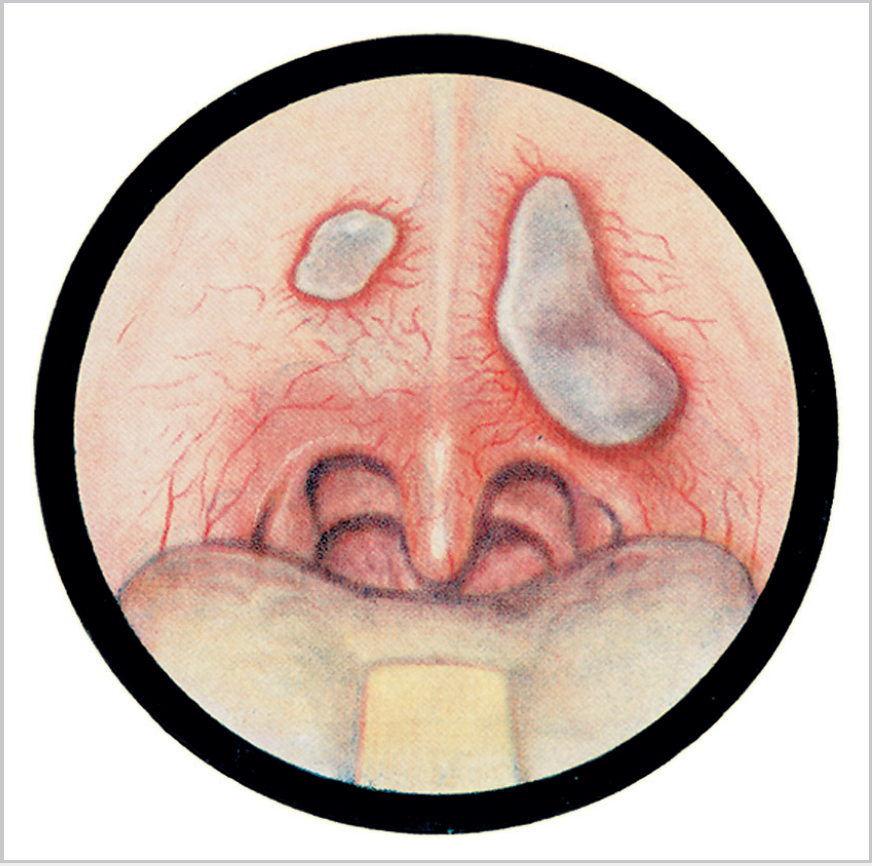47 Diseases of the Oral Cavity and Oropharynx • Measles—Koplik spots • Varicella zoster virus (VZV) (chickenpox)—vesicles • Behçet syndrome • Reiter syndrome • Granulomatosis with polyangiitis • Erythema multiforme • Pemphigus/pemphigoid (Fig. 47.1) • Kawasaki disease (mucocutaneous lymph node syndrome) • Sjögren syndrome • SLE • Vitamin C deficiency (scurvy) • Vitamin B2 deficiency • Vitamin B12/folate deficiency • Thrombocytopaenia • Polycythemia • Leukaemia • Herpangia • Hand-foot-and-mouth disease • Herpes simplex – Sunlight – Fever – Bacterial infections – Stress – Immunodeficiency – Other systemic illness • Herpes zoster (VZV)
47.1 Oral Manifestations of Systemic Diseases
47.1.1 Infections
47.1.2 Inflammatory Disorders
 Rare
Rare
 Recurrent oral and genital ulcers
Recurrent oral and genital ulcers
 Ocular inflammation
Ocular inflammation
 Uncommon
Uncommon
 Urethritis
Urethritis
 Uveitis
Uveitis
 Conjunctivitis
Conjunctivitis
 Arthritis
Arthritis
 Tongue ulcers may be mistaken for geographic tongue
Tongue ulcers may be mistaken for geographic tongue
 Gingival hyperplasia
Gingival hyperplasia
 Lingual, palatal, and buccal ulcers also common
Lingual, palatal, and buccal ulcers also common
 Multiple erosions of lip and tongue
Multiple erosions of lip and tongue
 Autoimmune vesicobullous disorders
Autoimmune vesicobullous disorders
 90% of pemphigus patients will have oral cavity involvement
90% of pemphigus patients will have oral cavity involvement
 Strawberry tongue
Strawberry tongue
 Dry fissured lips
Dry fissured lips
 Pharyngeal injection
Pharyngeal injection
 Necrotizing pharyngitis
Necrotizing pharyngitis
 Keratoconjunctivitis
Keratoconjunctivitis
 Xerostomia—ulcers of tongue, lips, and buccal mucosa
Xerostomia—ulcers of tongue, lips, and buccal mucosa
 Arthritis
Arthritis
 Xerostomia
Xerostomia
 Petechiae, haemorrhagic bullae, and white keratotic plaques on tongue and oral mucosa
Petechiae, haemorrhagic bullae, and white keratotic plaques on tongue and oral mucosa
47.1.3 Miscellaneous Disorders
 Swollen red gingival ulcerative oral petechiae ± haemorrhage
Swollen red gingival ulcerative oral petechiae ± haemorrhage
 Stomatitis
Stomatitis
 Glossitis
Glossitis
 Angular chelitis
Angular chelitis
 Oral burning
Oral burning
 Recurrent oral ulcers
Recurrent oral ulcers
 Painful atrophy of oral mucosa and tongue
Painful atrophy of oral mucosa and tongue
 Necrotizing ulcerative gingivitis
Necrotizing ulcerative gingivitis
 Angular chelitis
Angular chelitis
 Petechiae ecchymoses and haemorrhages
Petechiae ecchymoses and haemorrhages
 Purple-blue discolouration of tongue and gums
Purple-blue discolouration of tongue and gums
 Gingival hypertrophy
Gingival hypertrophy
47.2 Infections
47.2.1 Viral Infections
 Coxsackie viruses
Coxsackie viruses
 Multiple small vesicles and superficial ulcers—posterior oropharynx
Multiple small vesicles and superficial ulcers—posterior oropharynx
 Coxsackie A virus
Coxsackie A virus
 Anterior oral cavity
Anterior oral cavity
 Either primary or recurrent secondary
Either primary or recurrent secondary
 Common in preschool children
Common in preschool children
 Diffuse bilateral lymphadenopathy common
Diffuse bilateral lymphadenopathy common
 Painful ulceration
Painful ulceration
 Precipitating factors for recurrent type:
Precipitating factors for recurrent type:
 Lesions along V2 and V3
Lesions along V2 and V3
 Uncommon in infants and children
Uncommon in infants and children
< div class='tao-gold-member'>
![]()
Stay updated, free articles. Join our Telegram channel

Full access? Get Clinical Tree



